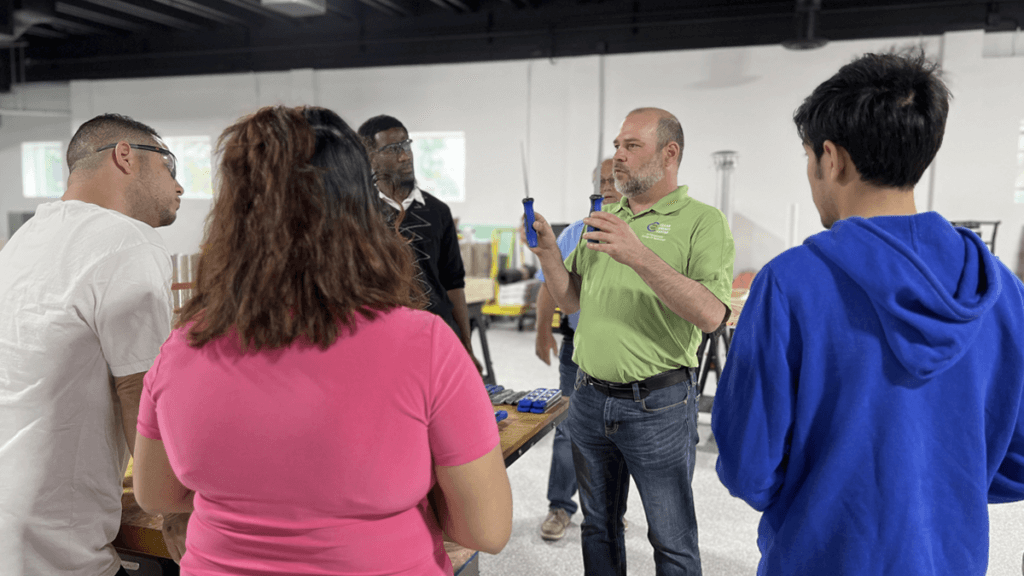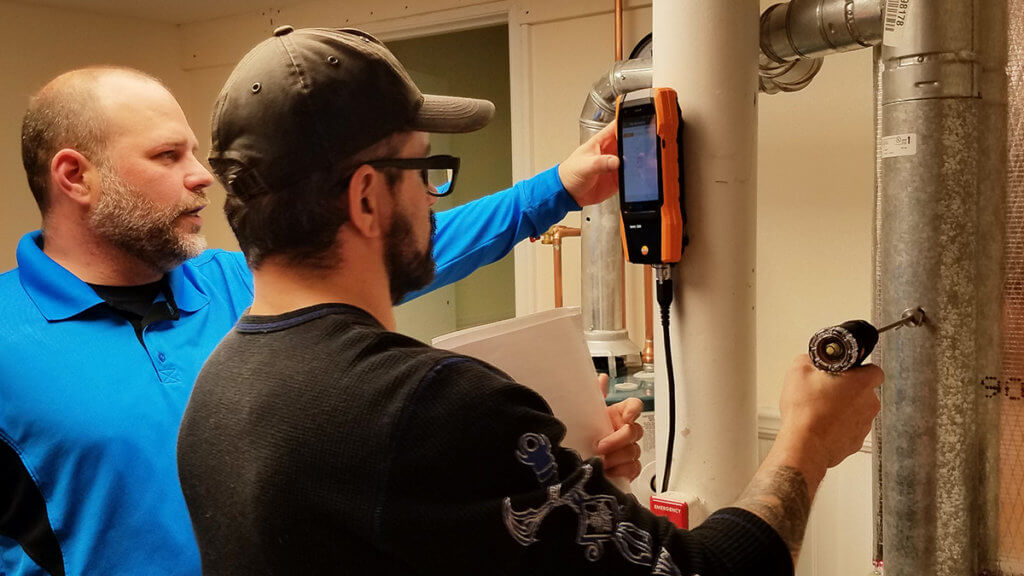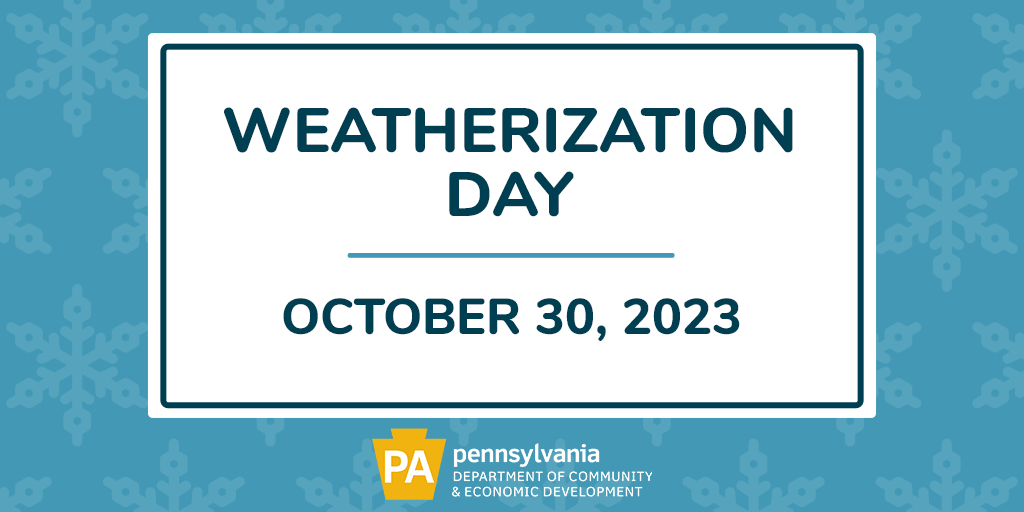The Community Action Committee of Lehigh Valley is a Champion for its Residents

On a mission to improve quality of life and provide economic opportunity for residents, the Community Action Committee of the Lehigh Valley (CACLV) has been an active neighbor to the citizens of the Lehigh Valley since December 1965. We caught up with Lynette Praster, director of the Center for Community Services at the PA Department of Community & Economic Development, to hear how the action agency has successfully lived up to this promise with assistance from DCED programs.
What is the Community Action Committee of the Lehigh Valley’s mission?
The Community Action Committee of the Lehigh Valley (CACLV) is a multicounty, anti-poverty agency trying to make the marketplace and economy work for everyone in any way it can. Whether it’s offering workshops for local entrepreneurs or weatherizing homes for low-income families, it’s a progressive community action entity that provides human services, community and economic development services, policy advocacy, and community organizing all in one place.
CACLV can accomplish all this thanks to funding and backing from local partners and DCED programs, as well as the strategic leadership of executive director Alan Jennings. Jennings is particularly partial to DCED’s Neighborhood Partnership Program (NPP), which provides tax credits to incentivize PA companies to fund neighborhood development. “In our thinking, economic opportunity is the solution,” says Jennings. Easton made strides with the program for 12 years, and CACLV’s subsidiaries in the Community Action Development Corporations of Allentown and Bethlehem are still utilizing the NPP.
The NPP enables the agency to transform neighborhoods. strengthen communities, and build partnerships, which results in sustainable, long-term solutions to blighted areas instead of quick fixes. “NPP is an excellent source of the resources needed to turn neighborhoods into better marketplaces,” says Jennings.
In 2017, Allentown made façade improvements on commercial and residential programs, hosted community events, launched a program to promote artist residencies in the Hamilton District, introduced young people to careers in law enforcement, and funded GED exam preparation through the NPP, among other initiatives. Within the past year, Bethlehem completed the third year of its Southside Vision 2020 plan with façade repairs, enrichment activities for children, educational programs for homeowners on basic repair skills for their property, and much more.
In 2017, the CACLV also initiated Slate Belt Rising, which is Pennsylvania’s first multi-municipal Neighborhood Partnership, encompassing the boroughs of Wind Gap, Pen Argyl, Bangor, and Portland. In its first year of operation, Slate Belt Rising beautified the Banger Business District, supported community events, engaged the local youth through group programs, and hosted business classes.
What initiatives is CACLV currently working on?
The organization’s core funding, however, is the federal Community Services Block Grant (CSBG) — another program administered by DCED. They receive about $1.4 million from CSBG, then leverage it to generate a $24 million annual budget, 79 percent of which is private — something that’s unprecedented in the Community Action world. With the support from DCED and many other generous partners in the most recent fiscal year, the CACLV has been able to keep up with its mission and do much more for the community beyond the NPP.
The Rising Tide Community Loan fund offered loans to 14 women-owned businesses, 10 minority-owned businesses, and 18 to businesses owned by low- to moderate-income individuals. The businesses covered a range of services and shops including clothing retail, construction, microbrewery, salon, quilter, florist, children’s toy manufacturer, massage therapist, and more.
The Second Harvest Food Bank of Lehigh Valley and Northeast Pennsylvania distributed 8.4 million pounds of food to a network of more than 200 nonprofit organizations across a six-county region. The food bank also conducted 32 cooking matters classes to teach cooking, nutrition, and budgeting skills to low-income families and seniors.
Through CACLV’s shelter and apartments, it provided nearly 27,000 nights of short-term transitional housing and case management to 96 homeless families with 246 children. It also helped families by weatherizing more than 1,000 homes, which helped the customers of PPL Corporation save an average of 12 percent and customers of FirstEnergy save 13.5 percent per household. Since the 2007 recession, the CACLV has saved hundreds of families’ homes from foreclosure.
How is CACLV making a difference in its community?
While CACLV realizes the importance of acknowledging its accomplishments and how far it’s come, its staff also knows there’s still work to do. “We don’t have the liberty to rest on our success,” says Jennings.
There continues to be a stark disparity of wealth among students in the Lehigh Valley. To combat this, CACLV is currently in the early stages of helping students from Easton Area High School pursue post-secondary education while helping parents who aren’t familiar with the college admissions process. They initially selected a group of 22 students — the majority of whom are minorities — and so far, nearly all of them have been accepted to a college. Most are first-generation college attendees. The organization has continued to guide and accompany them throughout the process and looks forward to following them throughout their college careers.
Another key issue CACLV faces in its region is one felt across the country: the gender poverty imbalance. Poverty disproportionately affects women and girls: in 2015, women were 35% more likely than men to live in poverty. CACLV recognized that they needed to prepare their students with the tools and support they needed to be successful. This led to them piloting an afterschool program called She Has Everything (SHE), which aims to foster healthy self-esteem in and empower girls and women.
“We’re constantly testing the system,” says Jennings. “CACLV has been the conscience of the Lehigh Valley in confronting those who would deny people access to economic opportunity, and we’ve brought people together to correct those kinds of injustices. There is so much hurt in our neighborhoods; we are leaving far too many people behind. While I am cynical enough to understand what we’re up against, I am just as optimistic enough to pick the fight anyway. We’re doing everything we can to make the world a better place.”
CACLV has challenged several entities while maintaining friendly relationships and open conversations, a factor which has spurred a great deal of its success. CACLV continues to serve as a partner, relationship-builder, and advocate for the people of the Lehigh Valley, and hopes to do so for years to come.
To learn more about the Community Action Committee of the Lehigh Valley, visit their website and follow them on Facebook and X. Learn more about Pennsylvania’s Neighborhood Partnership Program by visiting the DCED website. You can stay up-to-date on all Pennsylvania company news by following us on X, LinkedIn, and Facebook.

Lynette Praster is the Director of the PA Department of Community & Economic Development (DCED)’s Center for Community Services. She has served in DCED’s Community Services Block Grant, Weatherization Assistance, and the Neighborhood Assistance Tax Credit programs for more than 10 years and has worked for the Commonwealth for more than 20. Before working in state government, Lynette held positions in the early care and education field that focused on child care resource and referral quality system efforts, children and youth services case management, school-based alcohol and drug prevention, and early school success efforts — including the development of Keystone Stars.





